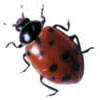When the Dalai Lama of Tibet met with economist John Kenneth Galbraith, he asked the Harvard professor a simple but penetrating question: “What would the world be like if everyone drove a motor car?” The Tibetan leader probably did not intend it, but his question constitutes a koan, a paradoxical riddle of Zen Buddhist tradition. A koan has no logical answer — “What is the sound of one hand clapping?” — but the search for a solution may lead to a flash of enlightenment.

Seven Wonders:
Everyday Things
for a Healthier Planet
by John C. Ryan
Sierra Club Books,
1999, 128 pages
The Dalai Lama’s question is a koan because it depends on an impossibility. If all the world drove like we do in North America — the only continent with nearly as many motor vehicles as people of driving age — global petroleum consumption would quadruple. Yet petroleum production will never quadruple: Many petroleum geologists predict that world oil production is nearing its peak and will begin a permanent decline within 10 to 25 years.
A planet of North American-style drivers would also cause the world’s emissions of heat-trapping carbon dioxide to double, even as climatologists agree that we need to cut back global emissions by 60 percent or more to avert climatic disaster. And long before everyone could step on the gas, smog, traffic jams, and fatal collisions would reach catastrophic levels. Most governments would be bankrupted trying to build the necessary emergency rooms, highways, and parking lots.
Cars clearly fail what you might call the Dalai Lama test: Could everyone in the world enjoy them? This doesn’t mean that people shouldn’t have cars, but it does mean that the North American way of life cannot be a model for the world. This fact, in turn, wouldn’t be such a problem were it not for what you might call the Baywatch effect.
David Hasselhoff, Ambassador for the American Dream
Each week, a billion people in 140 countries tune in to Baywatch, the most-watched series in television history. This swimsuit video disguised as drama is only one of the more scantily clad examples of America’s biggest export: culture. For better or for worse, people everywhere are chasing the American Dream of sport utility vehicles in the garage and steaks on the grill (and perhaps chiseled lifeguards at every turn).
Yet nowhere else do humans place nearly as many demands on the Earth as we do in North America. In energy terms, a human’s food consumption is similar to that of a common dolphin — about 2,500 to 3,000 calories per day. But adding in all the other energy we use (mostly from fossil fuels), the average North American consumes about 180,000 calories each day. That is the daily appetite of a sperm whale. We consume so much, “it’s as if each of us were trailing a big Macy’s-parade balloon around, feeding it constantly,” in the words of author Bill McKibben.
Just as one hand clapping cannot make a sound, a world of 6 billion North American-style consumers cannot come to pass. But pondering such a world can help us see our own in a different light. What can people in North America and everywhere else safely use in our daily lives? The koan helps steer us toward new ways of addressing the basic challenge of living on a crowded planet — sustainability. How can people get the nutrition, shelter, warmth, information, recreation, and community they need without placing insupportable demands on the world?
It’s no small question. Stabilizing the world’s climate, while creating a decent economic future for the billion people now living in absolute poverty, will require industrial nations to reduce their emissions of carbon dioxide by at least 75 to 90 percent. Other global ecological problems require similarly sweeping reforms.
Wonders Never Cease
Fortunately, all the tools necessary to slash our economy’s impacts severalfold already exist. We’re just not using them. Here are seven of the most powerful tools, “the seven sustainable wonders of the world.” They are everyday objects that bring our whale-sized appetites down to a human scale again, our gargantuan impacts down to a level the Earth can endure.

The bicycle — the most energy-efficient form of travel ever invented

The condom — the only thing short of abstinence that prevents sexually transmitted diseases and population growth (pretty good for a flimsy tube of rubber!)

The ceiling fan — a device that makes a room feel up to 9 degrees F cooler, using just a tenth of the electricity consumed by an air conditioner

The clothesline — the solar-powered clothes dryer

Pad Thai — a typical Asian food, rich in nutrition and skimpy on environmental impact

The public library — the epitome of reuse

The ladybug — a natural enemy that protects far more crops than pesticides do, all without poisoning anyone’s food, water, or habitat
Solutions to some of the planet’s most vexing problems are right under our noses. Yet many of the sustainable wonders are falling into disuse when they should be entering their golden ages. It will take concerted action, by individuals and by society, to help these everyday things realize their wondrous potential.
As British author H.G. Wells once said, “When I see an adult on a bicycle, I do not despair for the future of the human race.”
This article is adapted from Seven Wonders. Read a chapter from the book.


